(Original post date: August 31, 2018)
Until the day everyone is driving electric cars (or better yet, teleporting), fuel economy will remain a deciding factor when selecting tires. Every mile per gallon counts, which is why it’s important to select the correct tire for your vehicle, driving style, weather and road conditions.
Tread type has a definite effect on gas mileage; so if you’re thinking about a set of all-terrain tires, you need to consider how they’ll change what you pay at the pump as well as how they will change the way that you drive.
The meaning "all terrain" refers to tires that provide a smooth drive on pavement with extra grip in the deep snow, gravel, and even sandy beaches. All terrain tires mean they are designed for all-weather capability and some off-road adventures.
If your current vehicle takes you off the beaten path, then a simple highway tire isn’t going to do you any good. This is why many major tire manufacturers have made the move to tires with low rolling resistance, including all terrain tires.
The major difference between A/T tires and highway (also known as street) tires is all-terrain varieties are designed to grip a variety of surfaces including off-road conditions. As a result, you might forefeit a quiet ride and some fuel economy. That said, today's manufacturers of all terrain tires have made big strides in maximizing fuel efficience for A/T tires.
Highway tires are designed more for fuel efficiency, smooth rides, and longer tread life.
Mud terrain tires are designed for vehicles that spend most of their time off road, and because they have wide channels, they aren't good in wet pavement and rainy conditions. Choose mud terrain if you've got an adventure vehicle or work truck that spends the majority of time in muddy terrain. Mud terrain tires are not designed for pavement -- they're loud, lack on-road traction, and aren't fuel efficient.
Mud terrain tires are not designed for pavement -- they're loud, lack on-road traction, and aren't fuel efficient.
All terrain tires tend to have shorter lives than highway and street tires, because of their treadwear. Check the manufacturers' warranties to get an idea of how long the tires are expected to last. Any tire's life also depends on the driver, too. If you push your vehicle to the max -- off-roading, for example -- you'll wear them more quickly.
Do All-Terrain Tires Affect Fuel Economy?Fuel efficient tires are specifically designed to reduce the amount of effort required for your tires to keep rolling. Tires designed with low rolling resistance save you money at the gas pump by reducing overall fuel consumption. All terrain tires won’t have the same fuel efficiency as passenger car tires, but still don’t increase fuel consumption as much as their mud terrain cousins.
Aggressive all terrain tires have a different tread pattern than highway tires, which means they are going to grip the road (and off-road), better.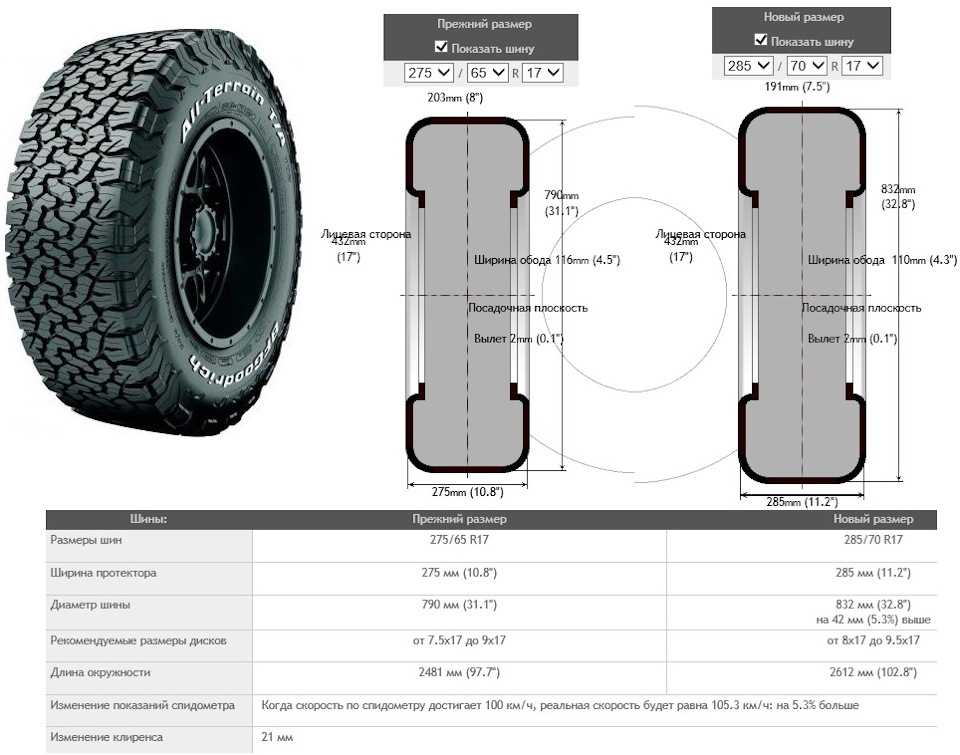 Consequently, all terrain tires have a greater rolling resistance than their pavement-bound counterparts. They also have a larger effect on fuel economy.
Consequently, all terrain tires have a greater rolling resistance than their pavement-bound counterparts. They also have a larger effect on fuel economy.
The consensus is that on average, all-terrain tires decrease fuel economy by about 3% compared to highway tires.
Let’s do the math. If you drive 15,000 miles a year while getting 20 mpg, and the price of gas is $3 per gallon, you’ll spend $67.50 more per year with a set of A/Ts. Not significant, but there’s no reason to spend extra money if you don’t have to.
Tread design can have a much greater effect on gas mileage. For example, a really aggressive, heavy all-terrain tire can cause a vehicle to get 1 to 2 mpg less than it would with an ultra-fuel-efficient highway or street tire.
This is why many tire manufacturers have designed fuel efficient tires and not just highway and street tires. Many tire manufacturers have jumped on board to make good all terrain tires and even mud terrain tires designed for increased fuel economy.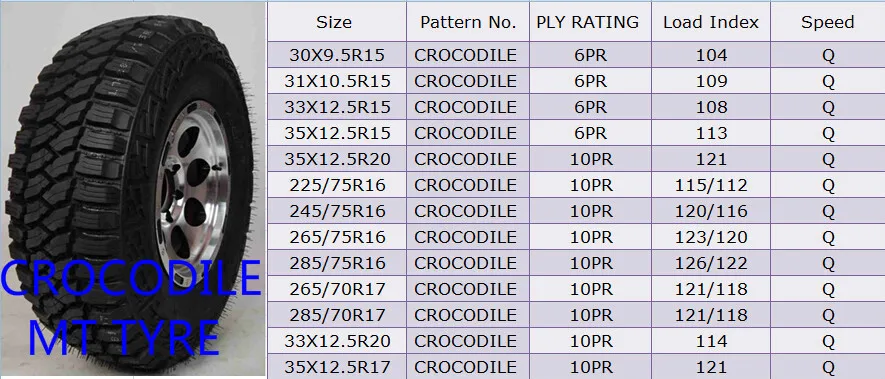 Good all terrain tires don’t have to be fuel sucking monsters, which is why some of the best all terrain tire manufacturers have created fuel efficient A/T models.
Good all terrain tires don’t have to be fuel sucking monsters, which is why some of the best all terrain tire manufacturers have created fuel efficient A/T models.
If you’re taking your vehicle off-road, you’ll certainly need an all terrain tire. They are made for smooth driving on the highway with enough bite to grip harsh landscapes like beaches, gravel and snow.
Switching to all terrain tires isn't necessarily going to increase fuel economy. But manufacturers are making it possible to have your all terrain tires with low rolling resistance tires, too.
Ask yourself a couple of questions: do you have a four-wheel drive vehicle? Secondly, do you plan on taking it off-road? If you answered “no” to either of these, stick with a highway tire … and even better, tires designed specifically for fuel efficiency, unless you prefer the look. An aggressive looking tire may not be necessary if you are looking to save more money at the gas pump.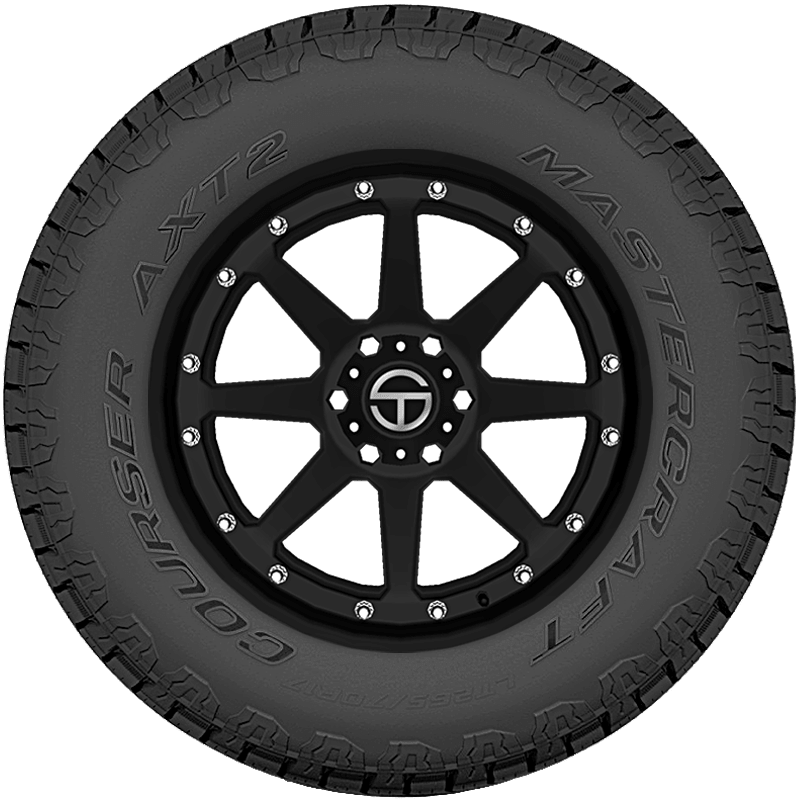 All-terrains are designed for trucks and SUVs that venture off pavement on a regular basis. But if you answered "yes," you'll want to check out the tires listed below.
All-terrains are designed for trucks and SUVs that venture off pavement on a regular basis. But if you answered "yes," you'll want to check out the tires listed below.
For those who are unwilling to give up their all terrain adventures to a more fuel efficient tire, there are options. Fuel efficiency is a crucial topic in many industries, and tires are no exception. You won’t have to give up your love for all terrain exploration with these A/T tires developed for fuel economy!
If you choose an all-terrain tire with extremely low rolling resistance – like the Nexen Roadian AT Pro RA8 – gas mileage loss will be next to nothing. On a scale from 1 to 10, this well-designed tire scores a fuel efficiency rating of 8.10. That’s exceptional, especially for a tire with enough grip to go off-road. With optimal performance in muddy situations, this all terrain tire has a sipe-in-groove pattern that also prevents stones and debris from getting lodged in the tread. This unique pattern also helps to expel mud and dirt from the tread to keep you going through tougher terrains.
The Continental TerrainContact A/T is known for being fuel efficient. With Continental's TractionPlus™ Technology this tire offers all terrain capability with off-road traction and durability. Excelling in wet braking and providing a comfortable ride, this aggressive all terrain tire is an exception to the rule. Continental isn’t the only manufacturer upping their fuel efficient all terrain game either- more and more of the best all terrain truck tires are being designed with low rolling resistance tread patterns.
As one of the first fuel efficient all terrain tires, the Kumho Road Venture AT51 is designed for long tread wear. The dual silicone compound is engineered to cool quickly and wear evenly, as well as promote fuel efficiency. Complete with the 3-Peak Mountain Snowflake Symbol, this tire is rated for severe snow and ice.
Ready to take on winter, this tire features an angled chamfer and tapered tread block that promotes self cleaning and improves grip in deep snow.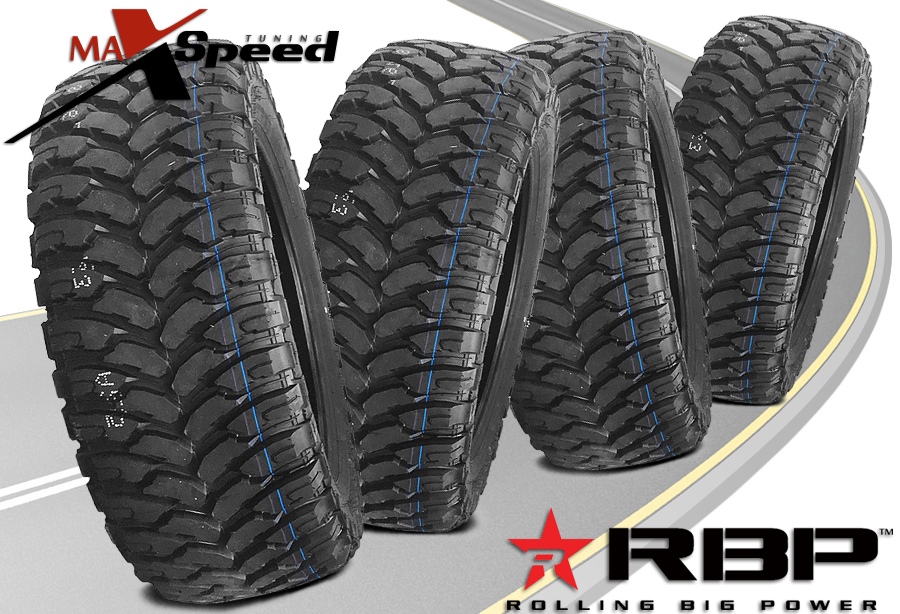 Muddy, wet work surfaces are no problem for this Kumho tire. It’s all terrain capability can take on inclement weather; and it will give you a quiet and comfortable drive on paved roads.
Muddy, wet work surfaces are no problem for this Kumho tire. It’s all terrain capability can take on inclement weather; and it will give you a quiet and comfortable drive on paved roads.
If you thought you could only get the best all terrain truck tires with low rolling resistance, this mud terrain tire will take you by surprise! The Dick Cepek Extreme Country offers low rolling resistance and mud terrain capability! This is made possible with a special Two-Ply Next Generation High Tensile (HT) Body Ply Cord which enhances sidewall strength without adding weight, rolling resistance, heat buildup, or ride harshness. Manufacturers like Dick Cepek, Continental, and Kumho are pulling their weight in the stride to increase fuel efficiency- even when off-road.
Though these tires are designed for maximum fuel economy, they are not as fuel efficient as highway tires. Not only do A/Ts adversely affect fuel mileage, but they also wear out faster than highway tires. So if you’re not in need of all terrain tires, you can stick with highway tires, and even find the ones that are most fuel efficient.
So if you’re not in need of all terrain tires, you can stick with highway tires, and even find the ones that are most fuel efficient.
The verdict: the overall price of ownership is less for a highway tire. Only switch to all-terrains if you plan on taking frequent trips off pavement or if aesthetics are more of a priority than cost.
SHOP ALL-TERRAIN TIRES NOW
Next Post:
Why Change to Winter Tires
February 16, 2022
When you're driving around in the great outdoors, it's important to have tires that can handle any terrain. But will all-terrain tires hurt your gas mileage or improve gas mileage? In this blog post, we will explore the effects of all-terrain tires on gas mileage and help you make the best decision for your vehicle.
What's the trade-off between fuel economy or fuel efficiency? The answer will depend on the type of vehicle and the type of tires that you have.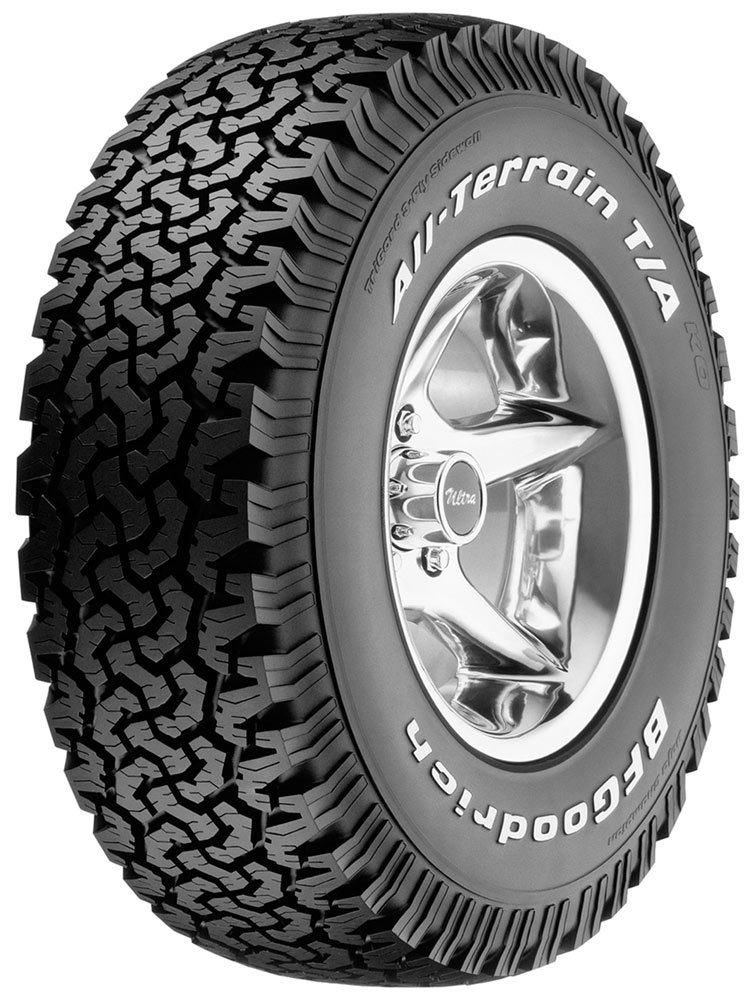 If you're driving a passenger car or a light truck, you will get better gas mileage with all-season tires.
If you're driving a passenger car or a light truck, you will get better gas mileage with all-season tires.
If you have a sedan or other vehicle that is not meant for off-road driving, putting on all-terrain tires will decrease your fuel economy by about two to three miles per gallon. This is because the all-terrain tire's tread pattern creates more rolling resistance than low rolling resistance tires which reduce weight and hold thin sidewalls.
But if you're driving a heavy truck, including large SUVs or other off-road vehicles, an all-terrain tire will hurt your fuel efficiency, and maintaining traction instead of saving gas will be a higher priority.
The fuel economy is important because it affects how much money you spend on gas, and it also has an impact on the environment. When you have a car that gets good gas mileage, you're doing your part to save resources and reduce emissions. You don't have to own a hybrid or electric vehicle to make a difference; any small change in your driving habits will help.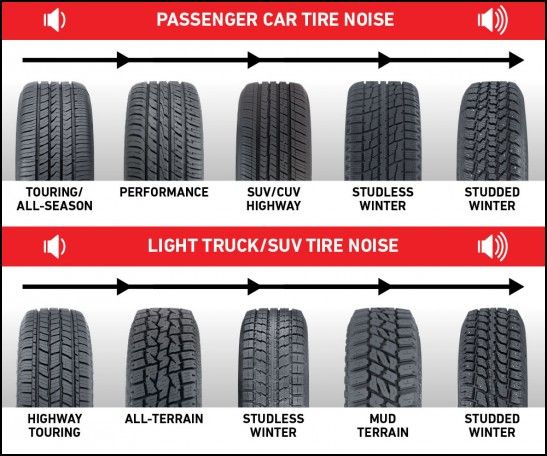
There are some things you can do to improve the fuel economy after switching to all-terrain tires :
- Drive slowly. All-terrain tires will help you grip the road better, but they will also increase resistance more than a standard tire. As with any tire choice, driving too fast will lower your gas mileage.
- Change your speed when turning. When you take a turn, the all-terrain tire will want to grip the ground and will resist turning. This resistance will decrease your fuel economy. To combat this, try to change your speed when you turn - go slowly through a tight turn, and increase your speed as you exit the turn.
- Plan ahead. If you know you're going to be driving on a road with a lot of curves or switchbacks, take the time to plan your route. This will help you avoid any unnecessary zigzagging and will save gas.
- Use cruise control when possible. When cruising down the highway, using cruise control will keep your speed consistent - and that means less throttle needed from your engine.
- Drive smoothly. You will get better gas mileage when your car's speed is consistent; that means no sudden braking or acceleration, as these will decrease fuel economy and will increase wear on important parts like the brakes and tires of your car. If you can drive with a light foot, it will help save money at the pump!
- Buy the right size tires - adding larger tires or suspension lifts can lower fuel efficiency. If you're looking for better mileage improvements to your vehicle you'll want to ensure the tires fit perfectly to your vehicle's specifications.
Fuel consumption can also play a factor in how much your all-terrain tires will affect gas mileage. You can avoid heavy fuel consumption while driving by avoiding
All-terrain tires provide better traction and handling on rough roads, meaning you will not have to slow down as much when driving over bumps or through curves. This added stability can also lead to increased fuel consumption. Although, all-terrain tires will give you a smoother ride while off the beaten path.
Although, all-terrain tires will give you a smoother ride while off the beaten path.
Terrain tires are best for off-roading, but will they hurt your fuel economy? The answer is no! These rugged tires will help you get better mileage because of their low rolling resistance. This means that the air will flow around them in such a way that it reduces friction and allows for faster driving speeds without any additional power needed from an engine.
All-terrain tires have a different tread pattern than other types of tires. They will also have thicker sidewalls and deeper channels for better traction in rough conditions.
The rubber compound is designed specifically to provide more grip when driving over rocks or other obstacles on the trail. This will help you increase fuel efficiency by reducing your vehicle’s weight and making it easier to maneuver around obstacles.
Street tires are fuel-efficient tires that are heavily used for highway driving whereas the best all-terrain tires are used mostly by the most hardcore off-road enthusiasts. A street tire can offer a more comfortable ride or quiet ride without affecting the steering wheel and gas pedal the same as most stock tires and generally get better gas mileage when compared with other types of tires.
A street tire can offer a more comfortable ride or quiet ride without affecting the steering wheel and gas pedal the same as most stock tires and generally get better gas mileage when compared with other types of tires.
As your tire rolls on the ground, its contact patch will change. It will have more grip when you are turning and less when you are going straight. If you drive mostly on-road, then a high rolling resistance tire will help make your car go faster for the same amount of gas used. If you do a lot of off-roading in wet climates, however, high rolling resistance will not be ideal and mud tires could work better for you.
Mud terrains are a good choice for off-roading enthusiasts because of their ability to absorb shocks when driving over rough surfaces or through deep puddles. They will help minimize vibration which will improve handling and braking performance as well.
The biggest downside to having all-terrain tires on your vehicle is that they will not last as long as regular ones due to wear and tear from off-roading conditions.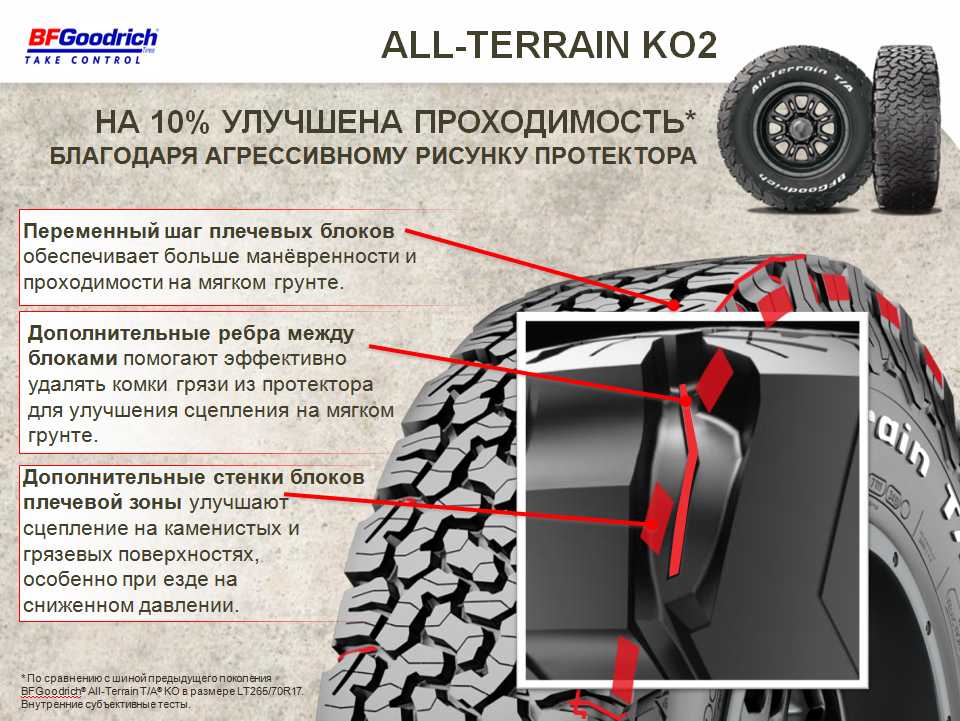
In addition to better fuel efficiency, all-terrain tires will also give you a smoother, more comfortable ride and improved handling on rough roads. When it comes to choosing the right tires for your vehicle, there are many factors to consider. Both have their pros and cons, and you have a lot more to think about than just your vehicle's fuel economy.
A mud terrain tire offers tread patterns and tire tread that's different than normal passenger car tires. Terrain tires tend to have the same fuel efficiency as mud tires but that can depend on your driving habits. If your concern is mostly with better fuel economy and fuel efficiency then there is no noticeable difference between the two.
Mud terrain tires are also very good for off-roading and will give you better traction than all-terrain tires. All-terrain tires will also work on most terrains but might not be as good in deep mud or snow. Another reason that can affect your decision in choosing mud tires is whether you be doing a lot of off-roading, or if you need more traction for will your vehicle or will be carrying heavy loads.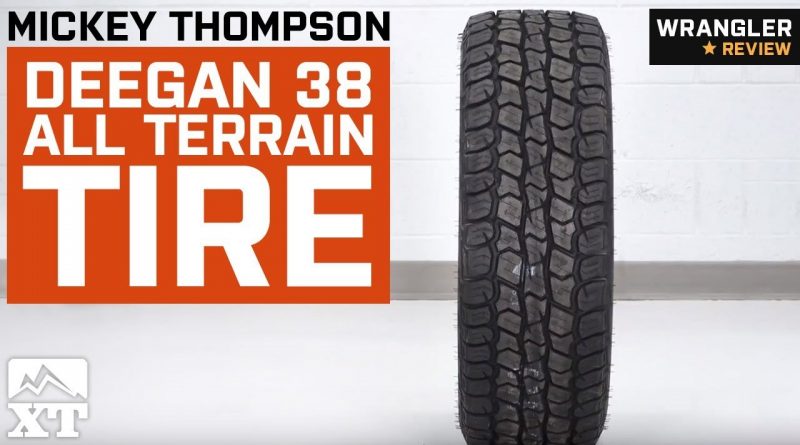
If you have any questions or concerns about mud terrain tires, all-terrain tires and fuel economy contact one of our tire experts at Pay Later Tires. We will provide the best advice on what type of mud tires are right for you and which mud tires are best suited for your needs.
Your driving habits can affect a lot of things including if you drive on a lot of highways and interstates then you will not have any trouble with the fuel economy. However, if you will be driving in hilly or mountainous areas will improve fuel economy and provide mileage improvements. The reason for this is that it takes more energy to climb hills.
A lot of drivers are switching to all-terrain or mud-terrain tires for the winter because of the extreme weather conditions we have been having lately. With these types of mud terrain tires, major tire manufacturers focus less on road noise and vehicle fuel economy than how the tires are affected by severe weather conditions.
Wet pavement, highway speeds, air pressure, tread life, load capacity, speed rating, fuel mileage, aggressive tread pattern, tread blocks, and tread design should be taken into consideration.
Your vehicle manufacturer may suggest a higher rolling resistance or reduce rolling resistance based on the high speeds you encounter but always check your owner's manual schedule to be sure when maintenance is required.
Mud tires affect gas mileage and can be less fuel-efficient, but offer less road noise while off-road or on mud terrain. Off-road tires affect fuel-efficient vehicles as well as affect gas mileage but the best all-terrain tires offer a compromise so you don't have to!
The best all-terrain tires will still give you standard fuel economy and better gas mileage while still allowing you to have those off-road adventures you love. Roof racks, a trailer hitch, and a lift kit can also affect your gas mileage but more often than not this effect is marginal.
If you want the best off-road mud tires for your money, you will have to give up a bit of fuel efficiency. However, if you are looking for all-terrain tires that will get the job done without draining your wallet, then there are many great options on the market!
Some mud tires available for the best off-road experience are the BFGoodrich Mud-Terrain T/A KM, Cooper Discoverer ST Pro, and the Yokohama Geolander A/T G015. When you are off-roading, you will be using a lot of gas so make sure to plan with extra fuel. We offer the largest selection of name-brand tires in the industry at paylatertires.com and have installment payment options for financing available. Approval only takes a few minutes with a credit check and bad credit doesn't affect your odds with our easy monthly payment options.
This will ensure that your off-road adventure will not leave you stranded in the middle of nowhere! When shopping around for tires or rims do not forget about all-season options like Bridgestone Blizzak DM-V Series Winter Tires which are great for hardcore off-road enthusiasts!
To sum it up, will all-terrain tires affect gas mileage? Not necessarily - it depends on the make, model, and type of tire.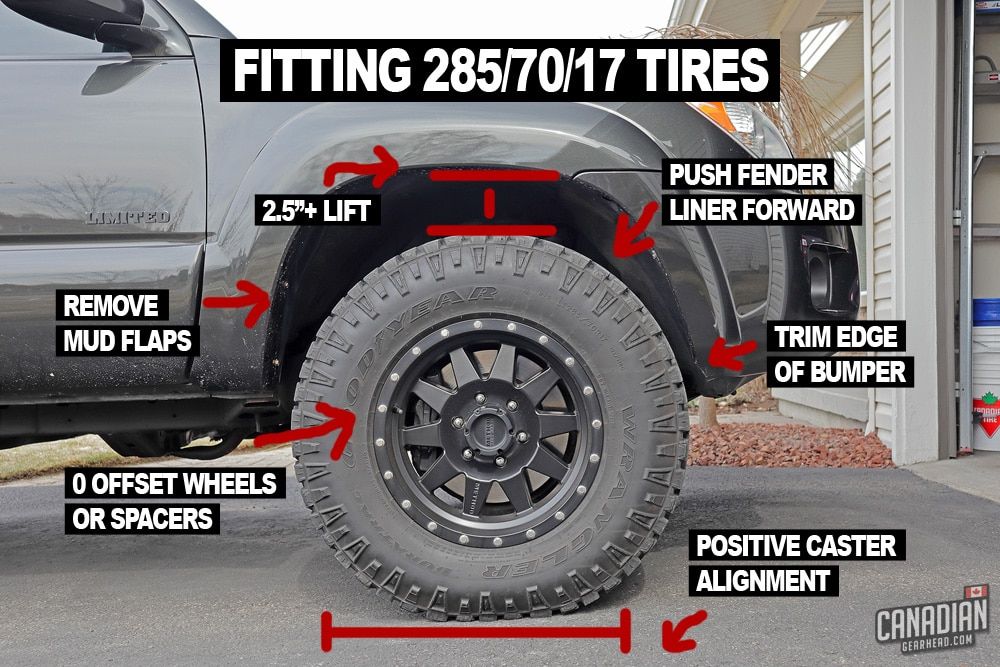 When you are looking for a good all-terrain option that will not drain your wallet, consider the many benefits they will offer while still allowing some fuel efficiency!
When you are looking for a good all-terrain option that will not drain your wallet, consider the many benefits they will offer while still allowing some fuel efficiency!
If you have any questions about this article or anything else on our site contact us anytime between 9 am - 6 pm PST.
snowhod-rybinsk.ru
In this case, the next time you buy new tires, you should remember that the right tire can help save significant money on gas stations.
Maxim Stroker
Saving a liter or two for every 100 kilometers will allow the right approach to the selection and operation of tires. The level of fuel consumption, among other factors, is significantly affected by the rolling resistance of the wheel. It depends on a number of parameters.
One of them is tire pressure. It is known that a large amount of energy is spent on mechanical deformation of the wheel during rolling.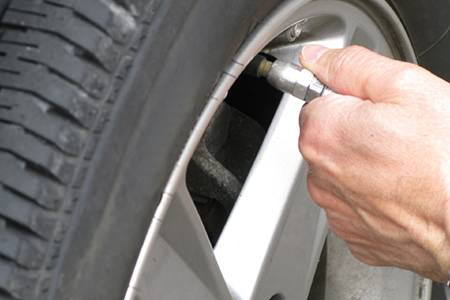 The less it is inflated, the more it collapses when moving. Conclusion: to save fuel, the wheel should be pumped slightly. This does not have the best effect on its shock-absorbing properties, accelerating the wear of the suspension elements and significantly reducing the comfort of the cabin occupants. Pumped-over wheels "cling" to the road worse - with all the ensuing consequences for the car's handling and safety.
The less it is inflated, the more it collapses when moving. Conclusion: to save fuel, the wheel should be pumped slightly. This does not have the best effect on its shock-absorbing properties, accelerating the wear of the suspension elements and significantly reducing the comfort of the cabin occupants. Pumped-over wheels "cling" to the road worse - with all the ensuing consequences for the car's handling and safety.
Energy losses due to mechanical deformations of the wheel are also affected by the characteristics of its material. The more “oak” and less elastic the rubber compound is used to create a particular tire model, the less it is prone to deformation. This effect, by the way, is widely used by wheel manufacturers when creating so-called "energy-saving tires". In real life, their use affects the handling of the car in much the same way as excess tire pressure. Although advertising "energy-saving" rubber, of course, does not mention this.
As far as the tread pattern is concerned, the less "toothy" it is, the lower its contribution to rolling resistance and excessive fuel consumption.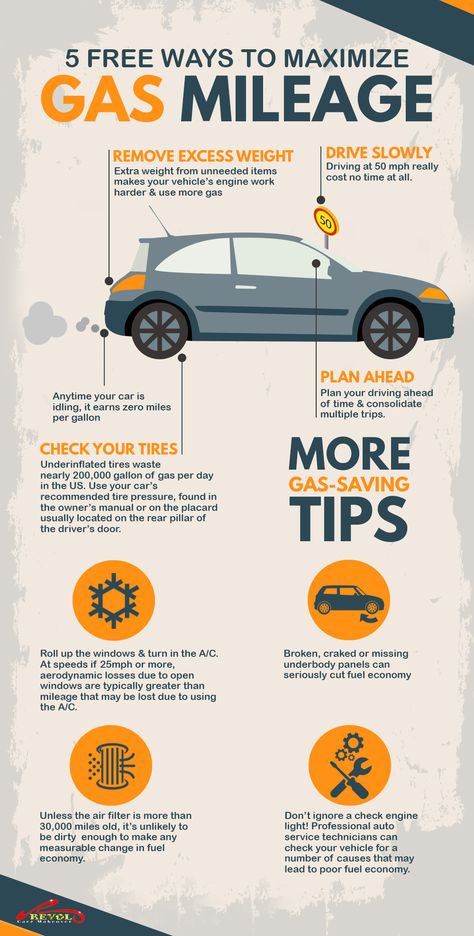
Tire width is one of the most important factors affecting rolling resistance. Among other things, its increase also increases the mass of the wheel in the most significant way, since it also entails an increase in the width and rim. This results in additional power consumption of the motor. The narrower the tire, the less, ultimately, the fuel loss attributable to it. According to data from various sources, by reducing the tire width index R16 from 265 to 185, it is possible, ceteris paribus, to obtain fuel savings of 1-2 liters per 100 kilometers.
As for the influence of the wheel radius itself on the amount of rolling resistance, in the general case - with constant uniform movement - the larger the radius, the lower the rolling friction loss. But cars drive like this only on suburban highways. When starting from a standstill, it is easier for the motor to spin a wheel of a smaller radius, spending on this, respectively, a smaller amount of energy and fuel. Therefore, if a car drives mainly around the city with frequent acceleration and deceleration, then it is more profitable from the point of view of economy to use tires of the smallest possible size.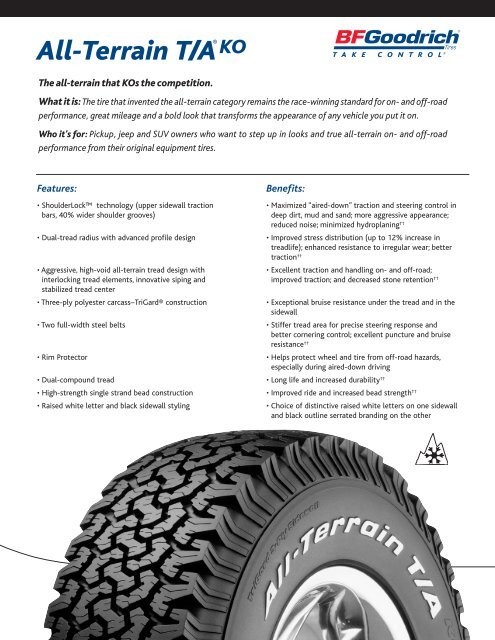 And if the passenger car spends most of its time on country roads, it is worth stopping at the wheels of the maximum radius allowed by the manufacturer's specification.
And if the passenger car spends most of its time on country roads, it is worth stopping at the wheels of the maximum radius allowed by the manufacturer's specification.
We get acquainted with the Great Korean crossover, who survived restyling
80138
gas stations, gasoline, fuel prices, summer tires, tires, winter tires, diesel fuel
Many car owners are wondering if the quality, width and other parameters of summer and winter tires affect fuel consumption in a car?
Answer: The tires installed have a direct impact on the fuel consumption of the car.
The first related element to fuel consumption is the rolling resistance of a tire in contact with the road surface.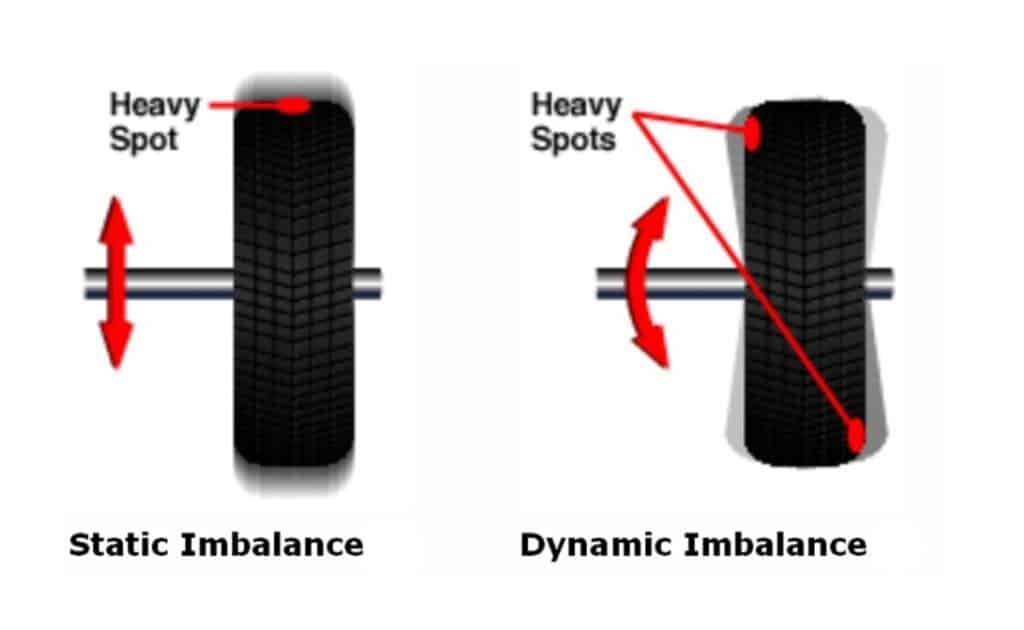 Thus, it can be concluded that insufficient tire pressure, large tire width and uneven, for example, unpaved road surface are some of the circumstances that increase fuel consumption.
Thus, it can be concluded that insufficient tire pressure, large tire width and uneven, for example, unpaved road surface are some of the circumstances that increase fuel consumption.
The tire uses more energy for rolling resistance, which is generated from the heat generated by the vehicle. That is why the minimum rolling resistance allows you to optimize fuel consumption.
In addition to technical reasons, an increase in fuel consumption can be directly affected by temperature conditions. It is at extremely high and extremely low temperatures that the composition of the rubber compound of a tire changes its elasticity and properties. The set of tires installed in this way interacts with the environment in a different way, which can affect the fuel consumption of the car. The optimum temperature for summer tires is 25 degrees Celsius. It is with these indicators that most tires show the most efficient operation.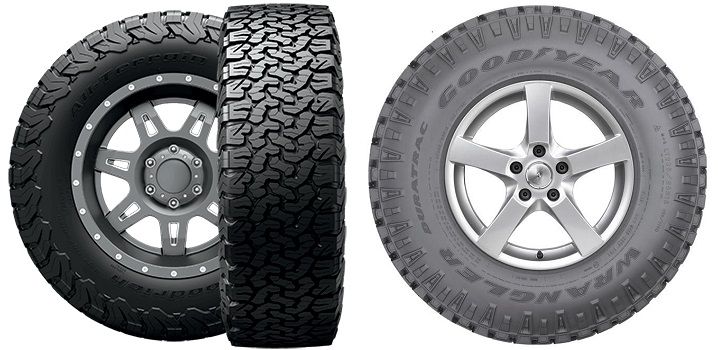 To reduce fuel consumption, it is recommended to take lighter tires, the rubber composition of which is recommended for light speeds and sports cars. It is this rubber that will reduce the overall specific weight of the car and slightly reduce consumption.
To reduce fuel consumption, it is recommended to take lighter tires, the rubber composition of which is recommended for light speeds and sports cars. It is this rubber that will reduce the overall specific weight of the car and slightly reduce consumption.
Hankook Hankook i*Cept W616 in stock
Diameters: R14, R15, R16, R17, R18, R19
Prices: from 5,789 to 16,590 rubles.
Hankook Winter I*Pike RW11 in stock
Diameters: R16, R18, R19, R20
Maxxis MA-S2 in stock
Diameters: R20
Maxxis Premitra HP5 in stock
Diameters: R15, R16, R17, R18
Prices: from 5,423 to 12,567 rubles.
Tire stiffness also directly affects fuel consumption. The increased rigidity of the rubber does not allow the tires to deform, which significantly reduces rolling resistance and allows the tire to interact optimally with any type of road surface.